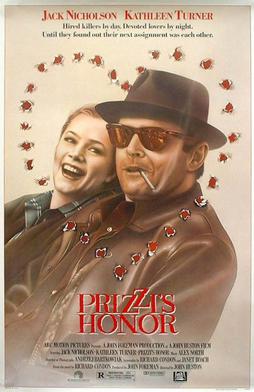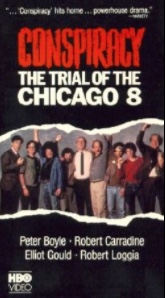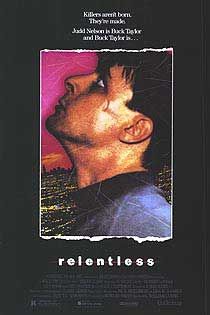I swear, I will sit through the worst films for the promise of an Eric Roberts cameo.
Roberts is only featured in about two minutes of 2019’s The Savant. According to the credits, he was playing a character named Lonnie. At one point, he called the film’s hero, police officer Nick Tantino (Frank Giglio), and had a nonsensical conversation with him while he was arresting a random person. I’m not really sure who Lonnie was supposed to be and the scene had very little to do with the film’s story. In fact, the scene just randomly occurred. I’m going to guess that the film needed to be padded out and someone said, “Let’s call Eric Roberts and add another name to the cast.”
Eric Roberts is not the only familiar face to show up in the film.
Martin Kove plays a literature professor who is also a sensei. One of his former students, an evil District Attorney named Zane Carroll (played by Eric Etebari), calls him for advice.
Former TV actress Joyce DeWitt plays a detective. Her partner, who tells a lot of bad jokes, is played by comedian and former Howard Stern flunky, Jackie Martling.
Veteran genre actress Julie McCullough plays a judge, who screams at a defense attorney.
Thomas G. Waites, who was one of The Warriors, plays a police chief.
Robert Loggia shows up as Dr. Reno, a psychiatrist who bellows at everyone and who explains how the savant mind works. Of all the “names” in the film, Loggia gets the most screentime. Interestingly enough, Loggia died in 2015 and The Savant was released four years later. I’m not sure when The Savant was actually filmed but considering how messy the film is and how many plot points are brought up and then abandoned and also the fact that the characters often look totally different from scene-to-scene, I’m going to guess shooting went on for a while.
As for the film, it’s about an autistic savant named Anthony (Miguel Jarquin-Moreland) who beats up a bully. Nick, who has been assigned to work as a glorified security guard at Anthony’s high school, takes Anthony under his wing and trains him to be a MMA fighter. It turns out that the secret of communicating with Anthony is to speak to him in Spanish so we get several scenes of Nick calling him a “pendejo” in order to get Anthony to fight. The entire film builds up to a cage match between Anthony and his bully just for Nick to suddenly cancel the match and instead enter the ring to fight Zane, who is not just a district attorney but also the sensei of his own karate school.
Zane is determined to not only defeat Nick in the ring but to also destroy Nick’s career by telling the police about the time that Nick killed two men in Italy. The murders are not in the record because, according to Zane, they happened “before we had international law.” What? Anyway, Zane decides to create a false criminal record for Nick because Zane is jealous over the fact that Nick is falling in love with Anthony’s sister, a defense attorney named Cassy (Suzy Kaye). Zane even sleeps with Nick’s ex-wife to get revenge. Seriously, I love the fact that Zane is both a prosecutor and a sensei. I mean, how does he find the time?
There’s a lot of plot in this movie. None of it really makes sense but it’s hard not be amused at just how incoherent it all is. The film is full of random and seemingly unrelated scenes, like a lengthy sequence where a defense attorney argues that his client, a doctor, was performing euthanasia when he shot three heroin addicts in the head. “Free Dr. Clark!” the courtroom crowd chants. (Of course, Dr. Clark is never again mentioned after this scene. The shouts of “Free Dr. Clark” brought to mind the “Free Hat!” episode of South Park.) The Savant plays out like a fever dream, one that dares you to try to make sense of it all.
Well, good luck with that. I could sit here and spending hours write about all of the film’s plot holes. But what’s important is that this film featured a lot of Robert Loggia yelling and about two minutes of Eric Roberts. Plan accordingly.
Previous Eric Roberts Films That We Have Reviewed:
- Star 80 (1983)
- Blood Red (1989)
- The Ambulance (1990)
- The Lost Capone (1990)
- Love, Cheat, & Steal (1993)
- Love Is A Gun (1994)
- Sensation (1994)
- Dark Angel (1996)
- Doctor Who (1996)
- Most Wanted (1997)
- Mr. Brightside (2004)
- Six: The Mark Unleased (2004)
- Hey You (2006)
- In The Blink of an Eye (2009)
- Enemies Among Us (2010)
- The Expendables (2010)
- Sharktopus (2010)
- The Dead Want Women (2012)
- Deadline (2012)
- The Mark (2012)
- Miss Atomic Bomb (2012)
- Lovelace (2013)
- The Mark: Redemption (2013)
- Self-Storage (2013)
- This Is Our Time (2013)
- Inherent Vice (2014)
- Road to the Open (2014)
- Rumors of War (2014)
- Amityville Death House (2015)
- A Fatal Obsession (2015)
- Stalked By My Doctor (2015)
- Joker’s Poltergeist (2016)
- Prayer Never Fails (2016)
- Stalked By My Doctor: The Return (2016)
- The Wrong Roommate (2016)
- Dark Image (2017)
- Black Wake (2018)
- Stalked By My Doctor: Patient’s Revenge (2018)
- Clinton Island (2019)
- Monster Island (2019)
- Seven Deadly Sins (2019)
- Stalked By My Doctor: A Sleepwalker’s Nightmare (2019)
- The Wrong Mommy (2019)
- Exodus of a Prodigal Son (2020)
- Free Lunch Express (2020)
- Her Deadly Groom (2020)
- Top Gunner (2020)
- Deadly Nightshade (2021)
- Just What The Doctor Ordered (2021)
- Killer Advice (2021)
- The Poltergeist Diaries (2021)
- A Town Called Parable (2021)
- Bleach (2022)
- My Dinner With Eric (2022)
- Aftermath (2024)









